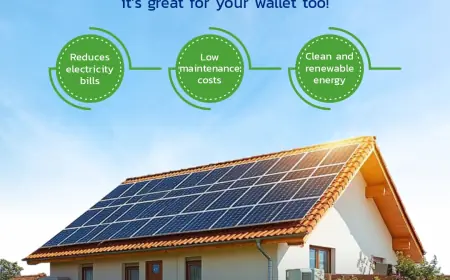Philippines Demand Response Management System Market Overview and Future Growth Strategies 2024 - 2032
The Philippines Demand Response Management System (DRMS) market has been witnessing significant growth over the past few years. As the country faces increasing energy consumption, the demand for advanced solutions to optimize energy use has escalated. The DRMS market in the Philippines aims to enhance grid stability and reduce energy costs by implementing demand response programs, which involve managing and controlling electricity consumption during peak hours. This system allows utilities and large consumers to shift or reduce their electricity load to prevent grid overloads and improve energy efficiency. With the rise in smart technologies and the government's push towards sustainability, the Philippines Demand Response Management System market is poised for substantial expansion.
Market Overview
Demand response management systems play a crucial role in the energy sector by enabling real-time monitoring and control of electricity consumption across different regions. The DRMS market in the Philippines includes various components such as software solutions, communication technologies, and hardware infrastructure. These systems facilitate the optimization of energy consumption by analyzing real-time data and sending signals to users to adjust their energy usage during critical periods. As the country continues to integrate renewable energy sources into the grid, demand response management will become even more essential for maintaining a balanced and efficient energy ecosystem.
Key Drivers of Growth
Several factors are driving the growth of the Demand Response Management System market in the Philippines:
-
Government Initiatives and Policies
The Philippine government has introduced numerous policies aimed at improving energy efficiency and reducing the environmental impact of power consumption. The government's support for smart grid technology and renewable energy adoption has created a favorable environment for the deployment of demand response management systems. -
Increasing Energy Consumption
The growing demand for electricity, especially in urban areas, has led to greater pressure on the national grid. The need for effective demand-side management solutions has never been higher, with DRMS offering a way to mitigate peak load issues and reduce the risk of blackouts. -
Technological Advancements
The advent of smart meters, IoT (Internet of Things), and cloud-based solutions has provided the foundation for a more responsive and efficient energy management system. These technologies allow real-time monitoring and data analysis, which are key to the successful implementation of demand response strategies.
Challenges in the Market
Despite the positive outlook for the Philippines Demand Response Management System market, several challenges hinder its full-scale adoption:
-
Infrastructure and Investment Costs
The upfront costs of installing advanced DRMS infrastructure, including smart meters and communication networks, can be a significant barrier for both utilities and consumers. Additionally, the lack of sufficient investment in infrastructure can slow down the implementation of such systems across the nation. -
Lack of Awareness and Education
Many consumers and businesses are still unaware of the benefits of demand response programs and how they can participate. Public education and outreach programs are essential to encourage greater adoption of these systems. -
Integration with Existing Grid Infrastructure
Integrating DRMS with the existing power grid infrastructure can be technically challenging, especially when dealing with older systems. Upgrading or retrofitting existing infrastructure to accommodate demand response technologies requires careful planning and significant investment.
Market Segmentation
The Philippines Demand Response Management System market can be segmented based on various factors such as type of solution, application, and end-user:
By Solution Type
-
Software Solutions
These are the core of any demand response management system. They help utilities manage electricity consumption, forecast demand, and optimize the grid’s operation. -
Communication Systems
These systems ensure reliable communication between utilities, consumers, and energy providers. They are essential for real-time demand response actions. -
Hardware Components
These include smart meters, sensors, and other physical devices required for monitoring and controlling electricity use.
By End-User
-
Residential
Homeowners are becoming more involved in demand response programs, with smart appliances and meters allowing them to adjust their energy consumption patterns. -
Commercial
Businesses, particularly those with high energy usage, can benefit greatly from DRMS by reducing energy costs and maintaining optimal operations. -
Industrial
Large-scale industrial operations can significantly reduce their energy costs by participating in demand response programs, which helps balance the overall grid load.
Future Outlook
The future of the Philippines Demand Response Management System market looks promising, with continued government support, technological advancements, and growing awareness among consumers. As the country aims to meet its energy sustainability goals, DRMS will become a cornerstone of energy management strategies. The ongoing investments in smart grid infrastructure and renewable energy integration will further drive the adoption of demand response management solutions, ensuring a more resilient and efficient energy grid for the future.
In conclusion, the Philippines Demand Response Management System market presents a wealth of opportunities and challenges. With the right investment, education, and infrastructure development, demand response systems can revolutionize how the country manages its energy consumption, benefiting both consumers and the environment.
More Trending Reports
What's Your Reaction?
 Like
0
Like
0
 Dislike
0
Dislike
0
 Love
0
Love
0
 Funny
0
Funny
0
 Angry
0
Angry
0
 Sad
0
Sad
0
 Wow
0
Wow
0

















































